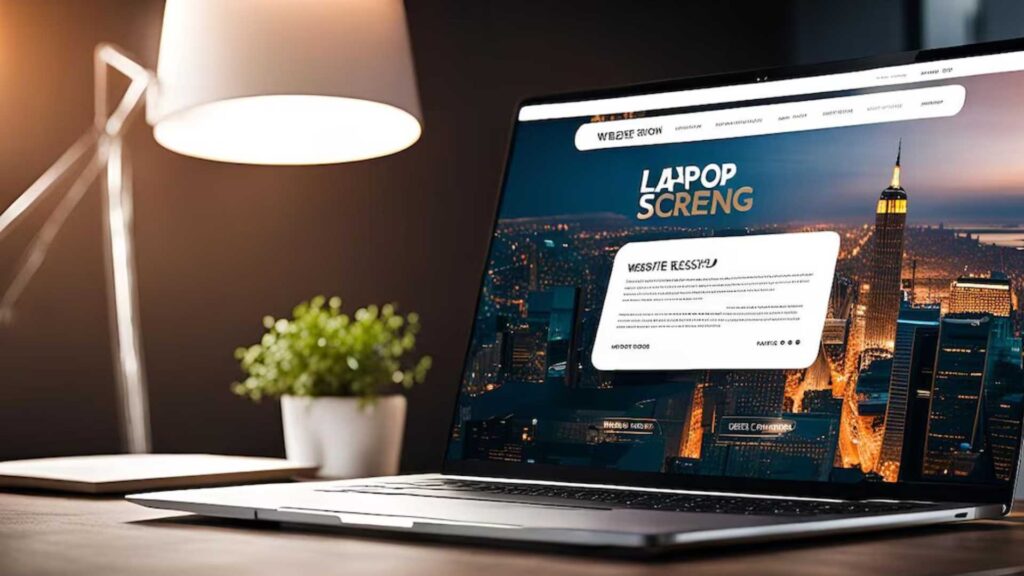Getting high-quality backlinks and adding images to a website can completely change your off page SEO strategy. Images can significantly enhance user engagement, improve click-through rates, and boost your website’s overall ranking.
But before you jump in and start posting everywhere, it’s important to choose the right platform. There are many image submission sites on the internet, but not all of them are effective in providing you with SEO benefits. In order to find the right site for sharing images, it’s important to do your research.
That’s where high-quality image submission websites come in. These platforms can help ensure your high-quality images are seen by the right audience. We’ll go over the essentials of image backlinks, how image submission websites boost the authority of your website, and advanced strategies for making the most of image submission platforms such as using title tags, descriptions, and anchor text strategically.
Together, we can maximise the full potential of your photos and increase the online visibility of your website!
What is Image Submission in SEO?
Image submission is the SEO strategic practice of sharing high-quality images from your website on relevant online platforms. It acts like a magnet for viewers and search engines, boosting website traffic and search ranking. Similar to placing digital billboards across the internet, you strategically place your images on websites, social media, and other platforms where your target audience gathers.
Remember to include links to your website, “captions” (imagine brief descriptions), and “tags” (keywords that describe your image). This increases the visibility of your photos and draws more attention to your brand.
But the enchantment doesn’t end there. The internet is essentially giving you a big thumbs up when other websites link back to yours because of your amazing pictures.
A higher ranking on Google and other search engines is a direct result of this popularity on the internet.
Importance of Image Submission for SEO Benefits
- Better SEO: Businesses can optimize their material for search engines, resulting in improved rankings in image search results and increased visibility for their websites, by integrating pertinent keywords, descriptions, and tags with submitted photographs.
- Enhanced Website Traffic: Captivating photos distributed via submission channels can increase website traffic, which in turn generates more leads and possible conversions for a company.
- Brand Building: Reiterating a company’s identification and recognition among target audiences is facilitated by regular image uploads that showcase the company’s logo, goods, or services.
- Backlink Opportunities: Including connections to a company’s website in image submissions helps build important backlinks from reliable sources, which raises a website’s domain authority and search engine results.
- Cross-Platform Engagement: Submitting images across various platforms such as social media, image sharing websites, and online communities increases the likelihood of engaging with diverse audiences and expanding brand reach.
- Accessibility and Shareability: Visual content is highly shareable and accessible across different devices and platforms, enabling businesses to extend their reach organically through user-generated shares and reposts.
Types of Image Submission Sites

High Authority Image Sharing Platforms:
These websites typically have high Domain Authority (DA) and Page Authority (PA), offering valuable backlink opportunities and enhanced visibility. Examples include Flickr, Pinterest, and Imgur.
Social Media Platforms:
Popular social media platforms such as Instagram, Facebook, and Twitter allow users to share images, providing businesses with opportunities to reach large audiences, engage with followers, and drive traffic to their websites.
Photo Sharing Communities:
Communities like Unsplash, Pixabay, and Pexels offer royalty-free stock images and encourage user submissions, making them excellent platforms for showcasing professional photography and accessing high-quality visuals for marketing purposes.
Business Directories and Listings:
Many business directories and listings, such as Google My Business, Yelp, and TripAdvisor, allow businesses to upload images to their profiles, enhancing their online presence and credibility in local search results.
Niche-specific Platforms:
Industry-specific image submission sites cater to particular niches or interests, providing targeted exposure to relevant audiences. Examples include Behance for creative professionals, Houzz for home improvement enthusiasts, and Foodgawker for food bloggers.
Blogging and Content Platforms:
Blogging platforms like WordPress and content-sharing websites such as Medium allow users to include images in their posts, contributing to a visually appealing and engaging content experience while potentially attracting backlinks and referral traffic.
Top Image Submission Website List
Here is the list of photo submission websites with Dofollow links-
[gswpts_table id=”1″]
List of Free Image Sharing Sites for SEO
[gswpts_table id=”2″]
List of High DA PA Image Submission Websites Updated
[gswpts_table id=”3″]
List of Top Photo Sharing Platforms
[gswpts_table id=”4″]
List of Image Submission Platrforms with Low Spam Score
[gswpts_table id=”5″]
Best Practices for Image Submission
- Optimize Image Format and Size: To reduce load times and enhance user experience, make sure photos are properly sized and compressed for online use before submitting. Popular file formats with high image quality and wide compatibility are JPEG and PNG.
- Descriptive File Naming: Use descriptive filenames that include relevant keywords to improve the discoverability of images by search engines. Filenames like “IMG_001.jpg” should be avoided in favor of more descriptive ones like “red-widget-product-shot.jpg.”
- Include Alt Text: To boost SEO and increase accessibility for people with visual impairments, include descriptive alt text for photos. Concise and informative, alt text should use pertinent keywords to explain the image content.
- Quality and Relevance: Submit high-quality images that are relevant to the context in which they’re shared. Images should align with the content theme, add value to the viewer’s experience, and reflect positively on the brand or message being conveyed.
- Proper Attribution and Copyright Compliance: Respect copyright laws and give proper attribution for images sourced from third-party websites or creators. Ensure compliance with licensing terms and always obtain permission before using copyrighted images to avoid legal issues.
- Engage with Community: Actively participate in image submission communities by sharing valuable content, engaging with other users’ submissions, and providing constructive feedback. Building relationships within these communities can lead to increased visibility, collaboration opportunities, and mutual support.
To Do Image Submission : Step by Step Guide
Choose Relevant Images: Ensure the images you select are not only visually appealing but also directly related to your brand, products, or the content you’re promoting.
Optimize Images: Resize your images to fit the requirements of the platforms you’ll be submitting them to, optimizing them for faster loading times without sacrificing quality.
Select Platforms: Research and identify the image submission platforms that best align with your goals and target audience. Consider factors such as platform popularity, audience demographics, and the potential for engagement and visibility.
Register: Create accounts or profiles on the selected platforms, ensuring that your profiles are fully optimized with accurate information, branding elements, and links to your website or social media profiles.
Upload: Follow the guidelines provided by each platform for uploading images. Pay attention to specifications regarding image size, format, and resolution to ensure that your images display correctly and attractively.
Provide Context: Accompany your images with descriptive captions, titles, or tags that provide context and additional information. Use relevant keywords strategically to improve the discoverability of your images in search results.
Engage: Actively participate in the image submission communities by interacting with other users’ content. Like, comment on, and share images from other users to build relationships, increase visibility, and attract attention to your own submissions.
Monitor Performance: Regularly monitor the performance of your image submissions on each platform. Track metrics such as views, likes, shares, and comments to gauge the effectiveness of your strategies and make adjustments as needed to improve results over time.
How Does Image Submission Promote Seo
Image submission plays a significant role in enhancing SEO by leveraging visual content to improve a website’s visibility and authority in search engine results pages (SERPs). First of all, submitting images gives you the chance to annotate them with alt text, descriptions, and pertinent keywords.
This helps search engines properly index and comprehend the content of your photographs. Properly optimized photos have a higher chance of showing up in search results when users do image searches using relevant keywords, which increases organic traffic to the website.
Furthermore, image submission contributes to building backlinks, which are essential for SEO. When images are shared on reputable platforms with high domain authority, they often include backlinks to the website they originate from.
These backlinks act as signals of credibility and authority to search engines, boosting the website’s overall ranking in SERPs. Additionally, images shared on social media platforms can generate engagement, shares, and potentially more backlinks, further strengthening the website’s SEO performance.
Future Trends in Image Submission
As technology continues to evolve, future trends in image submission are likely to focus on enhancing user experience and improving the discoverability of visual content.
One emerging trend is the integration of artificial intelligence (AI) and machine learning algorithms into image submission platforms.
These advanced technologies can analyze image content, understand context, and recommend optimized tags and descriptions, streamlining the submission process for users while ensuring better search engine visibility.
Another anticipated trend is the rise of immersive and interactive visual experiences. With the increasing popularity of virtual reality (VR) and augmented reality (AR) technologies, image submission platforms may evolve to support more immersive formats such as 360-degree images and interactive image galleries.
This shift towards more engaging visual content not only provides users with richer experiences but also presents new opportunities for businesses to showcase products and services in innovative ways, driving higher levels of user engagement and interaction.
Wrapping Up
In conclusion, leveraging image submission websites like Flickr, Pinterest, and Instagram is essential for businesses aiming to bolster their online presence and engage with their audience effectively. By embracing emerging trends such as AI-powered optimization and immersive visual experiences, companies can remain competitive in the digital landscape.
Success in image submission relies on strategic planning, consistent optimization, and active engagement with the online community. By following best practices and adapting to evolving trends, businesses can maximize the impact of their visual content, leading to increased visibility, brand recognition, and conversions in today’s visually-driven digital world.
FAQ
Are There Specific Guidelines for Image Submission?
Yes, different platforms may have specific guidelines for image submission regarding image size, format, and content. It’s essential to review and adhere to each platform’s guidelines to ensure your images meet the requirements and maximize their effectiveness.
How Often Should I Submit Images?
The frequency of image submission can vary depending on your marketing strategy and goals. It’s essential to maintain a consistent presence on image submission platforms while ensuring the quality and relevance of your images. Regularly assess performance metrics and adjust your submission frequency as needed to optimize results.
What are DA and PA in Image Submission?
DA (Domain Authority) and PA (Page Authority) are metrics used to measure the authority and credibility of a website or webpage. In image submission, DA and PA indicate the strength of the platform where images are submitted. Higher DA and PA platforms provide more valuable backlink opportunities and contribute to better SEO performance.







